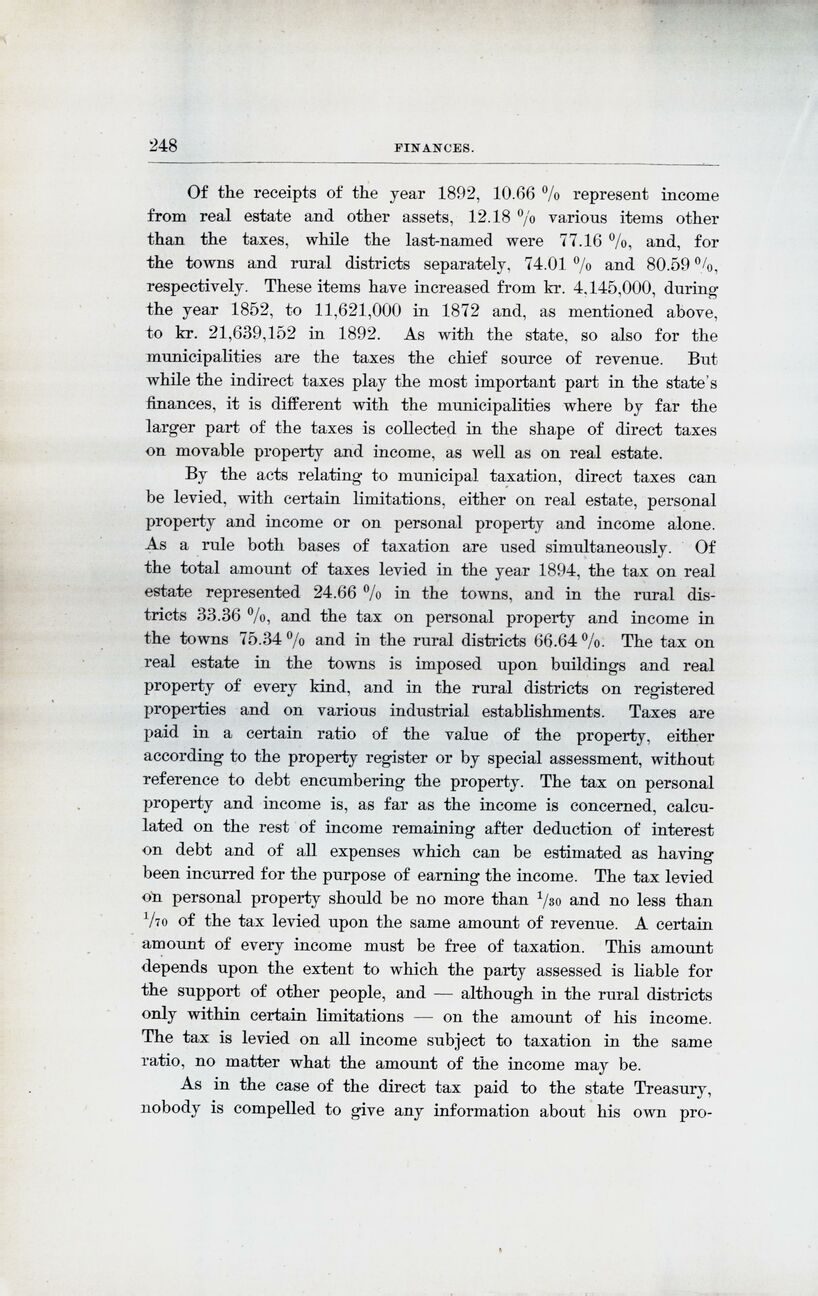
Full resolution (JPEG) - On this page / på denna sida - Finances, by J. J. Woxen

<< prev. page << föreg. sida << >> nästa sida >> next page >>
Below is the raw OCR text
from the above scanned image.
Do you see an error? Proofread the page now!
Här nedan syns maskintolkade texten från faksimilbilden ovan.
Ser du något fel? Korrekturläs sidan nu!
This page has been proofread at least once.
(diff)
(history)
Denna sida har korrekturlästs minst en gång.
(skillnad)
(historik)
Of the receipts of the year 1892, 10.66 % represent income
from real estate and other assets. 12.18 % various items other
than the taxes, while the last-named were 77.16 %, and, for
the towns and rural districts separately, 74.01 % and 80.59 %,
respectively. These items have increased from kr. 4,145,000, during
the year 1852, to 11,621,000 in 1872 and, as mentioned above,
to kr. 21,639,152 in 1892. As with the state, so also for the
municipalities are the taxes the chief source of revenue. But
while the indirect taxes play the most important part in the state’s
finances, it is different with the municipalities where by far the
larger part of the taxes is collected in the shape of direct taxes
on movable property and income, as well as on real estate.
By the acts relating to municipal taxation, direct taxes can
be levied, with certain limitations, either on real estate, personal
property and income or on personal property and income alone.
As a rule both bases of taxation are used simultaneously. Of
the total amount of taxes levied in the vear 1894, the tax on real
estate represented 24.66 % in the towns, and in the rural
districts 33.36 %, and the tax on personal property and income in
the towns 75.34 % and in the rural districts 66.64 %. The tax on
real estate in the towns is imposed upon buildings and real
property of every kind, and in the rural districts on registered
properties and on various industrial establishments. Taxes are
paid in a certain ratio of the value of the property, either
according to the property register or by special assessment, without
reference to debt encumbering the property. The tax on personal
property and income is, as far as the income is concerned,
calculated on the rest of income remaining after deduction of interest
on debt and of all expenses which can be estimated as having
been incurred for the purpose of earning the income. The tax levied
on personal property should be no more than 1⁄30 and no less than
1⁄70 of the tax levied upon the same amount of revenue. A certain
amount of every income must be free of taxation. This amount
depends upon the extent to which the party assessed is liable for
the support of other people, and — although in the rural districts
only within certain limitations — on the amount of his income.
The tax is levied on all income subject to taxation in the same
ratio, no matter what the amount of the income may be.
As in the case of the direct tax paid to the state Treasury,
nobody is compelled to give any information about his own
<< prev. page << föreg. sida << >> nästa sida >> next page >>